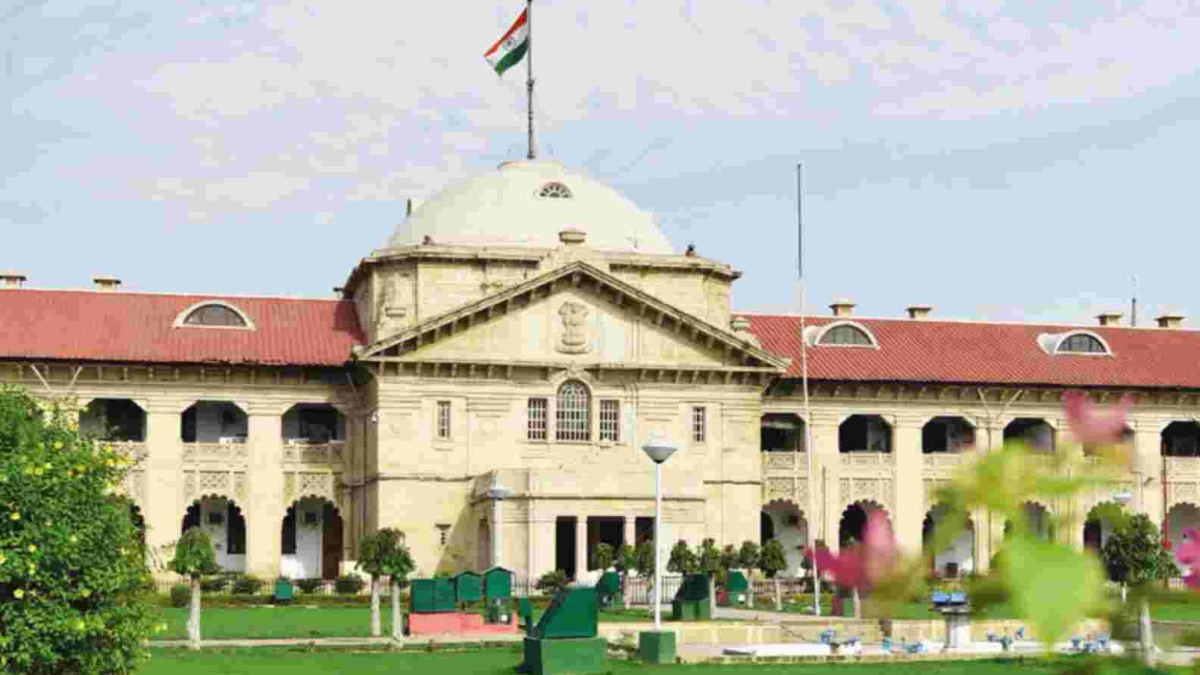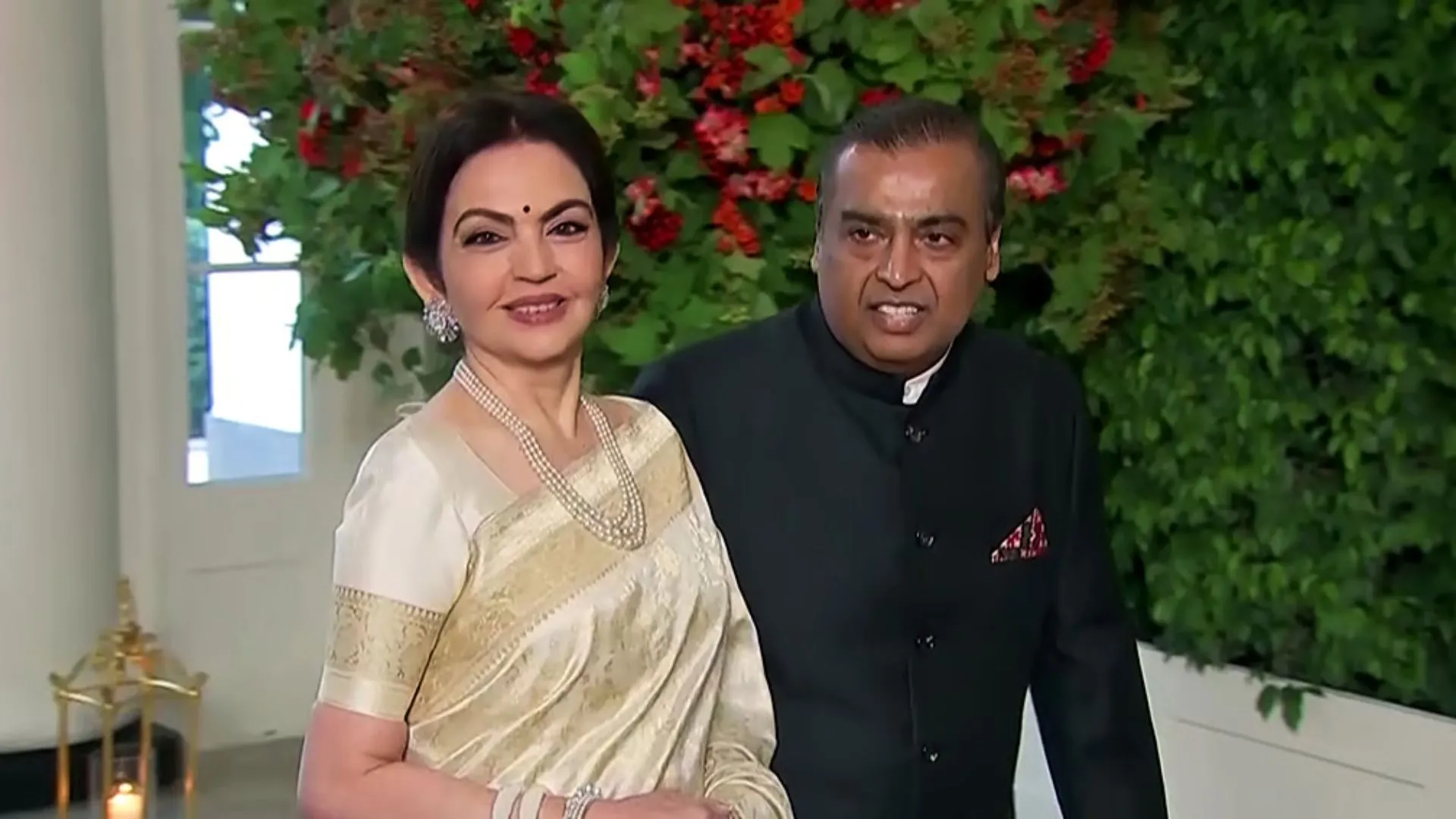In a clear, cogent, composed and convincing judgment titled Ram Harsh v. Union of India and 4 others in Writ – A No. – 17043 of 2021 and 2022 LiveLaw (AB) 98 delivered on January 20, 2022, the Allahabad High Court has made it crystal clear that the Armed Forces Tribunal Act, 2007 cannot and does not oust the High Court’s power of judicial review under Article 226 of the Constitution. The Bench of Justice Anjani Kumar Mishra and Justice Vikram D Chauhan observed sagaciously that, “The jurisdiction under Article 226 of the Constitution of India is extraordinary and discretionary in nature. It is also to be noted that the powers to be exercised by the High Court under Articles 226 and 227 are constitutional powers and the same cannot be excluded by legislation. The Armed Forces Tribunal Act cannot curtail the powers under the grundnorm being the Constitution.” These remarks were made by the Bench while adjudicating upon a writ petition filed under Article 226 of the Indian Constitution by a former sepoy (cook) in the Indian Army, aggrieved by the order of the Tribunal and seeking interest on the arrears of pension and retiral dues.
To start with, this learned, laudable, landmark and latest judgment authored by Justice Vikram D Chauhan for a Bench of Allahabad High Court comprising of Justice Anjani Kumar Mishra and himself first and foremost puts forth in para 1 that, “The present writ petition is filed by the petitioner challenging the order dated 27th August, 2021 passed by the Armed Forces Tribunal (RB), Lucknow in Original Application No.475 of 2017. It is further prayed in the present writ petition to issue direction commanding the respondent authorities to pay interest at the rate of 18 % per annum on the arrears of pension and other retiral dues w.e.f. 7th August, 1991 to the date of actual payment of the aforesaid arrears of pension and other retiral dues.”
While elaborating on the facts of the case, the Bench then envisages in para 2 that, “The brief facts of the case arising in the present writ petition are that the petitioner was enrolled in the Army Medical Corps of Indian Army on 6th August, 1971 and was discharged from service on 20th April, 1997, being deserter. Being aggrieved, petitioner preferred Civil Misc. Writ Petition No.16478 of 2001 before this Court. Upon creation of the Armed Forces Tribunal, the same was transferred and renumbered as Transfer Application No.1469 of 2010. The aforesaid Transfer Application was allowed by the order dated 21st April, 2016 to the extent that the respondents were directed to pay pension and all other retiral benefits to the petitioner, considering him to be in service upto 6th August, 1991 within a period of three months. When the respondents did not comply with the aforesaid order, the petitioner preferred Execution Application No.173 of 2016. In execution proceedings on 29th May, 2017, the authorities concerned handed over the Pension Payment Order bearing No.5001122017 dated 28th June, 2017 and the petitioner was paid pension w.e.f. 28th June, 2017. Thereafter, the respondent authorities have paid all the retiral dues of the petitioner w.e.f. 7th August, 1991 in terms of PPO dated 26th May, 2017.”
As we see, the Bench then discloses in para 3 that, “The petitioner thereafter, preferred Original Application No.475 of 2017 before the Armed Forces Tribunal, Regional Bench, Lucknow with the following prayers:-
“i. This Hon’ble Tribunal may kindly be pleased to issue a writ, order, rule or direction directing the respondents authorities specially the respondent no.4 to pay interest @ 18% per annum on account of delayed payment of pension other retiral dues such as Gratuity, G.P.F., Group Insurance, Commutation of pension, Leave encashment and arrears of pension etc. w.e.f. 08.11.1991 to the date of actual payment of the aforesaid retiral dues.
ii. This Hon’ble Tribunal may further be pleased to pass such other and/or further orders as deem fit, proper and necessary in the circumstances of this case.
iii. Award cost to the applicant.””
Simply put, the Bench then reveals in para 4 that, “The above mentioned original application was contested by the respondents before the Tribunal below and the Tribunal below by impugned judgment dated 27th August, 2021 has dismissed the above mentioned original application of the petitioner.”
Needless to say, the Bench then points out in para 5 that, “It is the impugned order dated 27th August, 2021 passed by the Armed Forces Tribunal, Regional Bench, Lucknow, that is subject matter of challenge in the present writ petition.”
No doubt, the Bench then rightly states in para 8 that, “The Act No. 55 of 2007 has been enacted to provide for the adjudication or trial by the Armed Forces Tribunal of disputes and complaints with respect to commission, appointments, enrolment and conditions of service in respect of persons subject to the Army Act, 1950, the Navy Act, 1957 and the Air Force Act, 1950 and also to provide for appeals arising out of orders, findings or sentences of court martial held under the said Acts and for matters connected therewith or incidental thereto.”
Simply stated, the Bench then lays bare in para 9 that, “The aforesaid Act No. 55 of 2007 under Section 4 provides for establishment of Armed Forces Tribunal to exercise the jurisdiction, powers and authority conferred on it by or under this Act. The jurisdiction of the Tribunal has been provided under Section 14 of the Act No. 55 of 2007. Section 14 provides that a person aggrieved by an order pertaining to any service matter may make an application to the Tribunal in relation to all service matters. Under Section 14(4) of the Act, the Tribunal is vested with the same powers as vested with the civil court while trying a suit in respect of matters enumerated under Section 14(4). It is further to be seen that the Tribunal is the authority under the aforesaid Act to decide both the questions of law and facts as may be raised before it.”
Broadly speaking, the Bench then specifies in para 11 that, “It is trite of law that the power of judicial review vested in the High Court under Article 226 and 227 of the Constitution to exercise judicial superintendents over the decision of all Courts and Tribunals within the respective jurisdiction is also part of the basic structure of the Constitution. Broadly speaking, judicial review in India comprises three aspects: judicial review of legislative action, judicial review of judicial decisions and judicial review of administrative action. The present case pertains to judicial review of judicial decisions.”
Most significantly, the Bench then holds in para 12 that, “The jurisdiction under Article 226 of the Constitution of India is extraordinary and discretionary in nature. It is also to be noted that the powers to be exercised by the High Court under Articles 226 and 227 are constitutional powers and the same cannot be excluded by legislation. The Armed Forces Tribunal Act cannot curtail the powers under the grand-norm being the constitution. The legislations under the constitutional framework is required to be in consonance with the scheme of the Constitution specially the scheme of judicial review provided in the Constitution under Articles 226 and 32 of the Constitution.”
Most remarkably, the Bench then points out in para 13 that, “The Full Bench of this Court in Mahesh Chand ExLNK/CI Vs Union of India (supra) in paragraph 71 has held as follows:-
“(i) Our jurisprudence in over six decades since the adoption of the Constitution has evolved a clear, categoric and unambiguous recognition of the importance of judicial review by the Supreme Court under Article 32 and by the High Courts under Article 226. Judicial review is an indispensable safeguard to the preservation of liberty, freedom and to the realization of rights founded on the rule of law. Without constitutionally entrenched remedies, the realisation of fundamental constitutional rights would be illusory or, as Dr B R Ambedkar described it, a mere ‘pious declaration’:
“It is the remedy that makes a right real. If there is no remedy, there is no right of all, and I am therefore not prepared to burden the Constitution with a number of pious declarations which may sound as glittering generalities but for which the Constitution makes no provision by way of a remedy. It is much better to be limited in the scope of our rights and to make them real by enunciating remedies than to have a lot of pious wishes embodied in the Constitution. I am very glad that this House has seen that the remedies that we have provided constitute a fundamental part of this Constitution…”50
(ii) The power of judicial review of the Supreme Court and of the High Courts is firmly entrenched as a basic feature of the Constitution which lies beyond the amending power. Even more so, ordinary legislation cannot abrogate the constitutional power of judicial review that is vested in the Supreme Court under Article 32 and in the High Courts under Article 226;
(iii) The Armed Forces Tribunal Act, 2007 does not contain, either expressly or by necessary implication, any exclusion of the power of judicial review that is conferred upon the Supreme Court under Article 32 or upon the High Courts under Article 226. The legislation in fact contains a statutory recognition in Section 14 that the jurisdiction which is conferred upon the Armed Forces Tribunal is a jurisdiction in relation to service matters as defined in Section 3(o) as was exercisable by all courts and tribunals immediately before the appointed day, save and except the jurisdiction exercisable by the Supreme Court and the High Courts;
(iv) Having said this, it needs to be emphasised that the existence of jurisdiction and the nature of its exercise have distinct connotations in constitutional law. The Armed Forces Tribunal is constituted by legislation which provides for a specialized and efficacious administration of justice in matters falling within its jurisdiction under the provisions of the Act. This is coupled with the need to maintain discipline in the Armed Forces;
(v) The Armed Forces Tribunal is a court of first instance and ordinarily, matters which fall within the purview of its jurisdiction have to proceed for adjudication before the Tribunal and the Tribunal alone. Against the decision of the Tribunal, there is a statutory remedy of an appeal which is provided under Sections 30 and 31 to the Supreme Court;
(vi) Since a statutory remedy of an appeal is provided, the principles which are well established for the exercise of the jurisdiction under Article 226, would warrant that the High Court should be circumspect and careful while determining as to whether any case for the exercise of jurisdiction under Article 226 of the Constitution is made out;
(vii) The jurisdiction under Article 226 has not been abrogated as it could not have been, being a basic and essential feature of the Constitution.””
Of course, the Bench then commendably points out in para 19 that, “The power of the High Court under Article 226 of the Constitution for judicial review of the order of the tribunal below is not curtailed or restricted in any manner. The remedy provided under Article 226 of the Constitution is a extraordinary and discretionary remedy.”
To put things in perspective, the Bench then hastens to add in para 20 postulating that, “It would be pertinent to add that the principle that the High Court should not exercise its extraordinary writ jurisdiction when an efficacious alternative remedy is available, is a rule of prudence and not a rule of law. The writ courts normally refrain from exercising their extraordinary power if the petitioner has an alternative efficacious remedy. The existence of such remedy however does not mean that the jurisdiction of the High Court is ousted. At the same time, it is a well settled principle that such jurisdiction should not be exercised when there is an alternative remedy available. The rule of alternative remedy is a rule of discretion and not a rule of jurisdiction. Merely because the Court may not exercise its discretion, is not a ground to hold that it has no jurisdiction.”
Furthermore, the Bench then notes in para 21 that, “It is further to be seen that from the decisions stated herein above, it is clear that the judicial review is part of the basic structure of the Constitution and the High Court under Article 226 of the Constitution is not denuded of its power of judicial review in view of Armed Forces Tribunal Act. The power of the High Court under Article 226 is discretionary and extraordinary and is to exercise with great caution. The exercise of the powers of judicial review by the High Court under Article 226 of the Constitution will depend on the facts and circumstances of each case. The discretion under Article 226 of the Constitution is to be exercised by objective assessment of the plea of the petitioner that the statutory forum provided under the Armed Forces Tribunal Act is not efficacious remedy in the facts and circumstances of the case.”
What’s more, the Bench then adds in para 22 that, “It is further to be seen that the case of the petitioner is that although there is an alternate remedy to approach the Hon’ble Supreme Court under Sections 30 and 31 of the Armed Forces Tribunal Act, 2007 however the petitioner has approached this Court under Article 226 of the Constitution as the remedy provided by way of appeal under Sections 30 and 31 of the aforesaid Act is not efficacious for the petitioner on account of the pitiable condition of the petitioner.”
Going ahead, the Bench then reveals in para 23 that, “The petitioner on the basis of his condition has come up before this Court to exercise the extraordinary jurisdiction under Article 226 of the Constitution. In the writ petition, the petitioner claims that he was working as a sepoy (cook) in the Indian Army and further on account of his pitiable condition the remedy of appeal is not an efficacious remedy.”
It deserves mentioning that the Bench then notes in para 26 that, “A perusal of the aforesaid paragraph 4 and 35 of the writ petition would demonstrate that the petitioner has preferred the present writ petition and has sought the bypassing of alternative remedy on the ground that the petitioner is an old person with various age related ailments and complications and that his wife has expired on 29th May, 2017. The petitioner has also filed the death certificate of his wife as annexure 1 to the writ petition.”
Quite forthrightly, the Bench then observes in para 27 that, “The primary ground for bypassing the alternative remedy and for entertaining the writ petition is that the petitioner is suffering from old age related ailments and complications. It is to be seen that the petitioner has not filed any medical certificate in support of his pleadings nor has brought on record any document to demonstrate that the petitioner is not physically fit to approach the Supreme Court. The petitioner has also not stated the details of the ailments on account of which the petitioner is seeking intervention of this court. It is also to be seen that the petitioner has not laid the foundation for bypassing the remedy of appeal in the writ petition nor has proved by documentary evidence that his physical condition is not such that the petitioner would be able to travel to New Delhi.”
Adding more to it, the Bench notes in para 28 that, “The petitioner has also stated that the petitioner has two sons however they are not living with him. It is to be noted that the pleadings in respect of the sons not living with the petitioner are wholly vague in nature as the petitioner has not stated that his sons have refused to assist him in availing the statutory alternative remedy nor the petitioner has brought on record any evidence showing the place where the sons of the petitioner are residing.”
In addition, the Bench then holds in para 29 that, “The petitioner in the past has been contesting the litigation before the Armed Forces Tribunal, Lucknow whereas the petitioner is stated to be residing at Allahabad. Once the petitioner is in the position to contest the litigation at Lucknow then it was the duty of the petitioner to have brought on record the material circumstances which are preventing the petitioner from approaching the statutory alternative remedy of appeal before the Supreme Court and a bald allegation that the petitioner is suffering from ailment without giving any details of the ailments and without there being any material particulars about the plea of the petitioner, the plea of the petitioner cannot be accepted.”
On a pragmatic note, the Bench then plainly states in para 30 that, “The country is witnessing a revolution in the digitalisation activity. The digitalisation is not only about implementation of technology. It encompasses the transformation of the courts and justice delivery system using technology in order to enable the experiences to be better, effective and within the reach of the ordinary citizens. The digitalisation is bridging the gap between the courts and the litigant. The process of digitalisation has enabled the litigant to approach the various forum of justice delivery system and the issue of distance of the courts have been effectively addressed. The Apex Court has put in place various digitalisation processes including addressing the court through video conference. Further, with the advancement of technology and telecommunication including internet services the litigant is empowered to approach his counsel through telecommunication/Internet. The process of digitalisation and technology advancement has further been accelerated during the pandemic. The digitalisation and technology are playing a crucial role in ensuring the efficient last mile delivery of services to citizens. Even during the pandemic the courts have delivered justice to the citizens without the citizens being physically present at the place where the court is situated and in this respect the role of digital technology has been crucial. A citizen has all the means in place to approach the Supreme Court using the digital process and technology. The Internet, emails, e-filing and video conference have revolutionised the way a person can communicate and avail Justice. In the recent past, the country has witnessed “work from home” as an important tool for the working class and on the same footing various measures have been taken by the apex court for enabling the citizens to get “justice at doorstep” and the distance between the citizen and the apex court is of no consequence as a result of the digital process. The alternative digital channel being put in place by the Apex Court for justice delivery can always be availed by the petitioner to approach the statutory remedy under the Armed Forces Tribunal Act. Once the alternate channel is available to the petitioner by using telecommunication and digital technology, the plea of the petitioner that the present writ petition may be entertained is not acceptable.”
To be sure, the Bench then held in para 31 that, “Once the petitioner has not demonstrated before this Court that there exists special circumstances and his physical disability is such that the petitioner is not in a position to approach the Apex Court, the writ petition cannot be entertained. A generalized and bald statement has been made by the petitioner in the writ petition with regard to his physical condition and ailment. However, no specific ailment has been described in the writ petition in order to permit this Court to assess the physical condition of the petitioner. On the basis of vague and bald statement, the petitioner cannot be permitted to bypass the alternative remedy of appeal.”
Finally, the Bench then concludes by holding in para 32 that, “In the result, we do not find any good reason to by-pass the statutory alternative remedy provided under the Armed Forces Tribunal Act, 2007. The writ petition is dismissed on the ground of statutory alternative remedy available to the petitioner leaving it open for the petitioner to file an appeal before the Hon’ble Supreme Court in accordance with the provisions of the Armed Forces Tribunal Act, 2007.”
In sum, we thus see that the Allahabad High Court has clearly held that the Armed Forces Tribunal Act cannot curtail the High Court’s power of judicial review under Article 226 of the Constitution. The High Court has elaborately stated the legal position on this as discussed hereinabove. No denying it!























